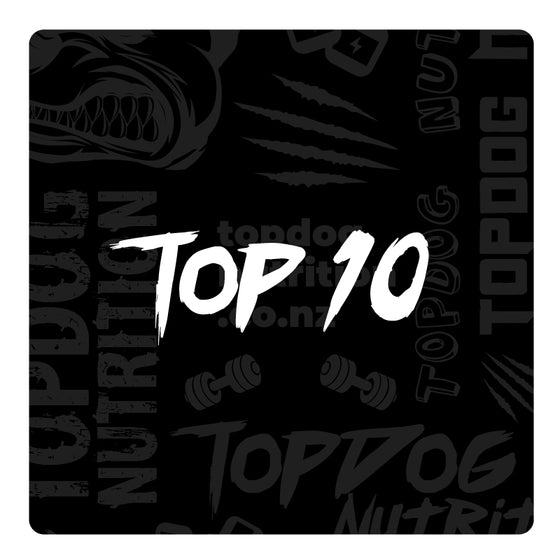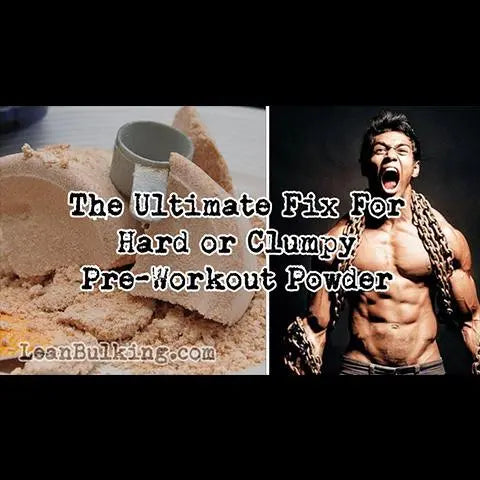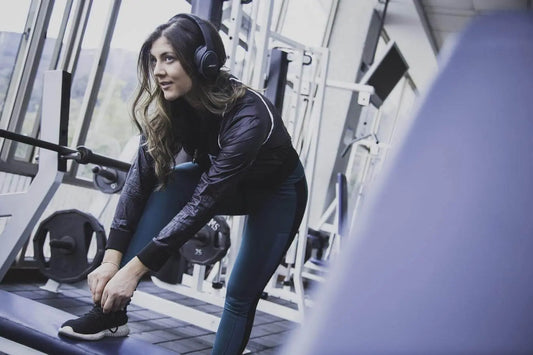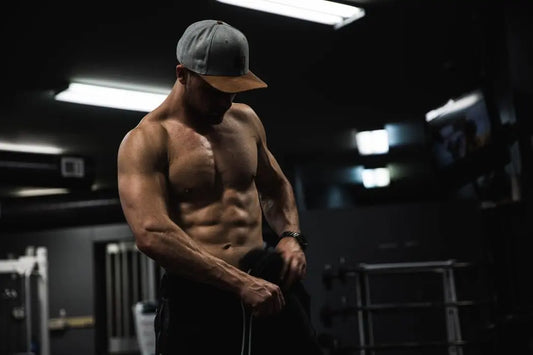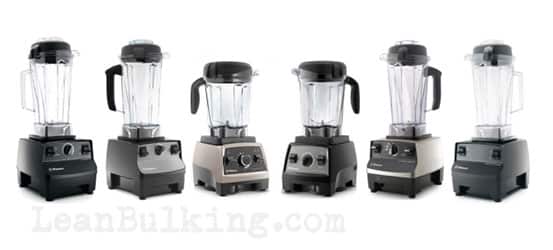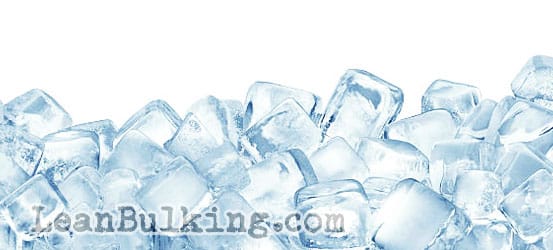Get Ripped and Start Building Real Muscle with Real Exercises

This blog is meant to answer those commonly asked questions we get about how to get lean and ripped fast. While there are many quick weight loss tips for men and women, we'll go over some of the fundamental principles of getting lean muscle and cut, a sample cutting diet to lose fat, and a handful of the most commonly asked questions when it comes to get lean and cut fast.
COMMON MISCONCEPTIONS ABOUT HOW TO GET LEAN AND RIPPED
- Everybody's weight loss goals are different. Some people are looking to become lean and ripped fast, others are looking to shed a few pounds to be healthier, some workout and eat well, others don't. What we're trying to emphasize is that you really need to find what works for you, not for everybody else.
- We truly believe that the fastest way to get lean and cut is 80% diet. You can run until you collapse or jump on the stairmaster for 2 hours a day and still never experience any quick/fast/rapid weight loss if you aren’t eating right.
- You are what you eat. If you keep eating sugary sweets, it'll be that much harder getting ripped fast. You'll never look like a million bucks if you keep eating from the Dollar menu.
BASICS OF GETTING COMPLETELY RIPPED AND CUT
- Postworkout (PWO) Nutrition:PWO nutrition is hands down the most important aspect of dieting to burn fat instead of muscle. It is within the 15 minutes after a workout that your body is in dire need of nutrients. It is in a completely anabolic state, and what you take in can be optimized to ensure maximum results. If you are burning calories and sweating off a ton of fat, you need to feed the machine immediately after your workout sessions. A banana or a handful of nuts are convenient snacks we like.
- Carbs:..what? I thought carbs were the opposite thing you wanted to take in for a diet to get ripped for men and women. In a strict cutting diet the majority of your carbs should come in the form of PWO nutrition, and the remainder in breakfast. Fibrous veggies are a staple, but keep in mind that they don’t count towards intake, as they have negligible impacts on blood sugar levels. (Exceptions: Carrots, Peas) All high glycemic carbs outside of PWO should be avoided. The best sources of low GI carbs can be found in oatmeal and brown rice, as well as yams.
- Protein:You need tons. 1.5-2.0 grams per pound of lean bodyweight is a good general rule of thumb. You should take in a good portion of your protein in the source of real meals, avoid relying purely on protein shakes, as real food comes with far better benefits. The list foods with high protein bioavailability is extensive, and I will only mention a few, (Egg whites, Lean steak, Chicken breast, the list goes on forever.).
- Water:H2O is the lifeblood of your body and does an incredible job of flushing out your system. Among the many benefits of drinking water, it also helps your metabolism work more efficiently so it's an ideal piece of the weight loss puzzle. You should be consuming at least half your body weight in ounces of water a day.
- Fats:Guess what? You need fat to cutting fat. We are talking about the granddaddy of fats, the EFA (Essential Fatty Acid). Good sources of fat are (Flax Oil, Nuts, Salmon, Olive Oil).
- Cheating:Cheating is essential. Why? Remember, the body runs on homeostasis, it likes to keep balance. After eating so well after a week, your body begins to adjust, and fat loss over time will not be as rapid. The other extremely important aspect is mental sanity. So many diets crash and fail because people don’t give themselves a chance to breathe. Remember, cheating is not an opportunity for you to pillage the entire mall food court. Shoot for a cheat meal, not an all out binge. A fast food value meal can be 2,000 calories. Eat that 3 times on one day, and you’ve consumed 6,000 calories. And that’s not good in any case.
- Cardio:Cardio and getting ripped quick usually go hand in hand. If you are wondering how to get ripped fast and lose belly fat, cardio is a must! I won’t go into specifics about length, other than cardio shouldn’t be excessive. 45 minutes to one hour daily should be sufficient, and should be performed on an empty stomach.
SAMPLE CUTTING DIET TO BUILD LEAN MUSCLE AND LOSE FAT FAST
Note: This is a sample diet for a 200-pound man who is wishing to lose belly fat fast, get ripped, and get the hard body that they’ve been hoping for. We can assume his BF to be around 17%. This diet will NOT work for you if those criteria don’t apply to you; however it is easy to customize the below diet to take in account your own statistics. It is the principles that are applicable. Further modifying this sample cutting diet to accommodate women wouldn’t be that difficult either.
Meal 1: Lean protein, 1/2 cup oatmeal
Meal 2: Protein shake/lean protein (2 tbsp flax)
Meal 3: Veggies, lean protein
Workout
Meal 4: PWO Nutrition
Meal 5: Veggies, lean protein, 1/2 cup rice or oatmeal.
Meal 6: Shake with flax
That turns into approximately 300 grams of protein, 130 grams of carbs, and 50 grams of fat.
*Reminder: This is a PRIMER. It’s not mean to be comprehensive.
FREQUENTLY ASKED QUESTIONS ON HOW TO BECOME LEAN AND RIPPED
Q: I’m looking for the fastest way to lose weight, should I completely cut out dairy?
A: Dairy will hold onto fat more stubbornly than anything else, so it is highly recommended if you are trying to lose fat. The best protein to get lean and cut would be a vegan blend that does not have dairy. If you don’t mind a soft look, fat free cottage cheese is an excellent caseinate source, but as for milks, there is way too much processed sugar.
Q: What’s the best thing to go from fat to ripped?
A: In this particular order: lock down a legitimate meal plan, introduce your body to different types of high intensity cardio workouts and drink lots of water. The most important thing in my opinion is to simply stick with it and always look for ways to burn a few extra calories. Park further away from the store entrance, wake up and go to bed earlier, take the stairs instead of the elevator, etc. It’s a lifestyle change, not a one-time project.
Q: What about cycling carb intake?
A: Obviously on non workout days you will be without a shake, so you will be auto-cycling. It works well that way.
Q: Is whey protein okay to take while cutting?
A: The common misconception is that whey protein makes you big and bulky, but nothing could be further from the truth. A cheap whey protein concentrate has less protein per serving, which leaves more room for cheap fillers and other garbage. All the extra sugar, fat, carbs and sodium probably won’t help your goal of shredding up. If you instead take a whey protein isolate, there is far more protein per serving with little to no fillers. Getting cut isn’t just about burning the fat off your body…it’s also about building lean, high-quality muscle which is what a good whey protein will help with.


